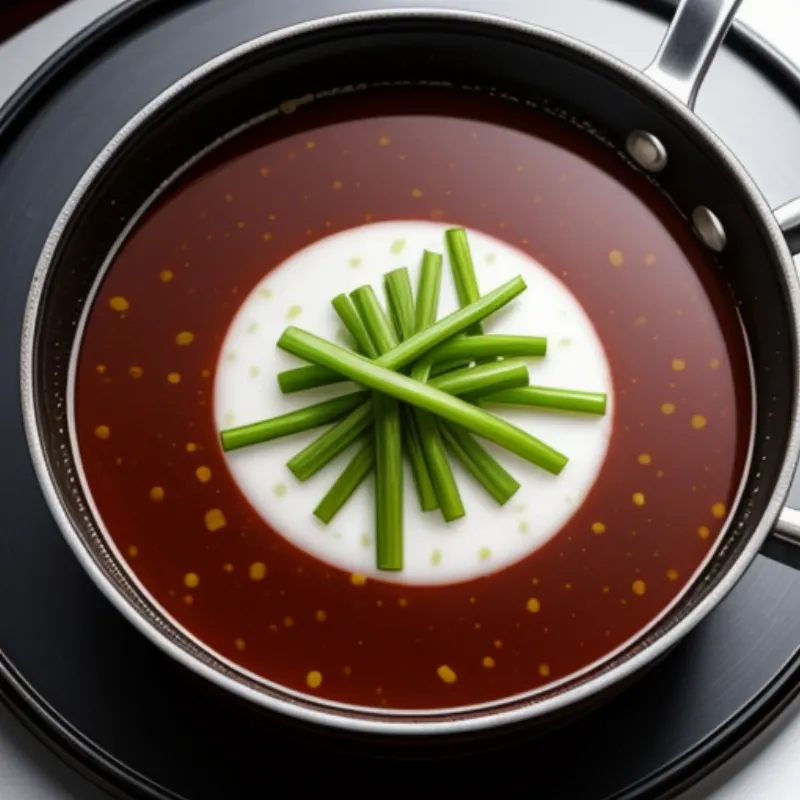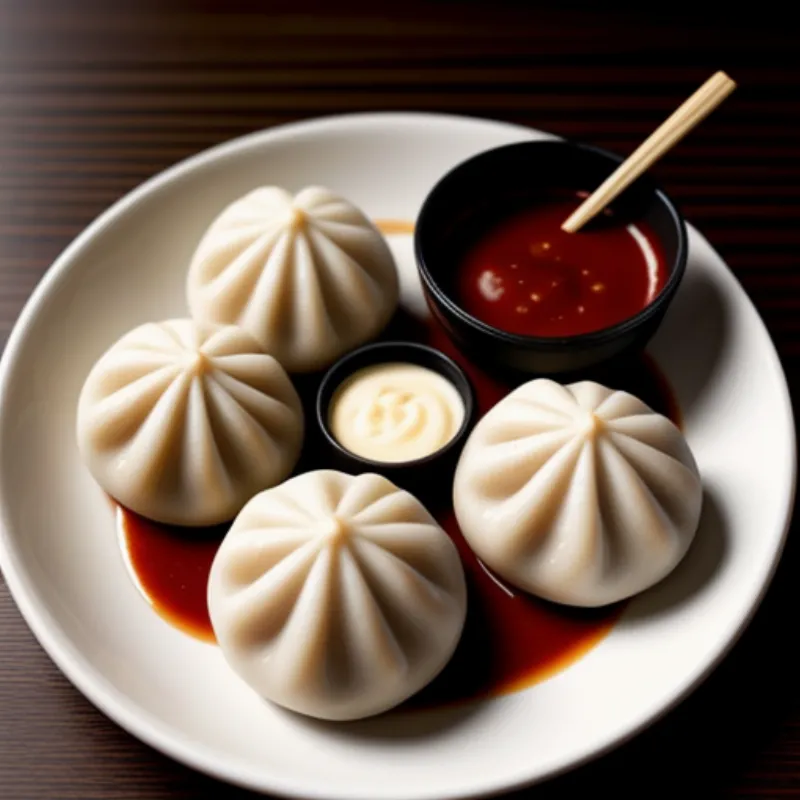Japchaegi sauce, with its unique savory and subtly sweet profile, is the heart and soul of many Korean dishes. This versatile sauce, often compared to a Korean version of soy sauce, adds a burst of umami to anything it touches. From dipping sauce for dumplings to a marinade for meats or a flavor enhancer for stir-fries, Japchaegi sauce is a must-have in your culinary arsenal.
Intrigued? Let’s embark on a flavorful journey and learn how to make this iconic sauce right in your own kitchen. Trust me, it’s easier than you think, and the results are incredibly rewarding!
Unlocking the Secrets of Japchaegi Sauce
Ingredients: A Symphony of Flavors
Main Ingredients:
- 1 cup soy sauce (for a less salty option, try using low-sodium soy sauce)
- 1/2 cup water
- 1/4 cup brown sugar (you can adjust this to your liking, depending on how sweet you prefer your sauce)
Flavor Enhancers:
- 2 cloves garlic, minced (did you know that using fresh garlic will give your sauce a more pungent flavor?)
- 1 teaspoon grated ginger (a little ginger goes a long way in adding a warm, slightly spicy note to the sauce)
- 1/4 cup chopped green onion (for an extra layer of flavor, use the white and green parts of the onion)
Optional Additions:
- 1 tablespoon mirin (a sweet rice wine that adds a subtle sweetness and depth of flavor)
- 1 teaspoon sesame oil (toasted sesame oil is recommended for a richer flavor)
- A pinch of black pepper
Tools You’ll Need:
- Small saucepan
- Whisk
- Measuring cups and spoons
- Airtight container for storing
Crafting the Perfect Japchaegi Sauce: A Step-by-Step Guide
- Combine the Ingredients: In your saucepan, whisk together the soy sauce, water, brown sugar, minced garlic, grated ginger, and chopped green onion.
- Simmer and Thicken: Place the saucepan over medium heat and bring the mixture to a gentle simmer. Allow it to cook for about 5-7 minutes, stirring occasionally, until the sugar has dissolved and the sauce has slightly thickened.
- Taste and Adjust: This is the fun part! Give your sauce a taste and adjust the seasonings to your liking. If you prefer it sweeter, add a touch more brown sugar. Want a hint of heat? Add a pinch of red pepper flakes.
- Cool and Store: Once you’re happy with the flavor, remove the saucepan from the heat and let the sauce cool completely. Transfer the cooled sauce to an airtight container.
Chef’s Tip: “For a richer flavor, consider adding a small piece of dried kelp (kombu) or a few dried shiitake mushrooms to the sauce while simmering. Just remember to remove them before storing.” – Chef Kim, Korean Cuisine Specialist
 Japchaegi Sauce Simmering in a Saucepan
Japchaegi Sauce Simmering in a Saucepan
Tips and Tricks for Japchaegi Sauce Success:
- Fresh is Best: Whenever possible, use fresh garlic and ginger for a more vibrant flavor.
- Sweetness Control: The amount of brown sugar can be adjusted to suit your taste. Start with less and gradually add more until you achieve your desired sweetness.
- Storage Smarts: Store your Japchaegi sauce in an airtight container in the refrigerator for up to 2 weeks.
Serving Up Japchaegi Sauce: Endless Possibilities
- Dipping Delight: Japchaegi sauce is a classic dipping sauce for Korean dumplings (mandu), spring rolls, and even fried chicken.
- Marinade Magic: Marinate your favorite meats, tofu, or vegetables in Japchaegi sauce for at least 30 minutes before grilling, stir-frying, or pan-frying.
- Flavor Booster: Add a splash or two of Japchaegi sauce to stir-fries, noodles, soups, and stews to enhance their savory depth.
Did You Know? Japchaegi sauce gets its name from the popular Korean glass noodle dish, Japchae, where it’s often used as a seasoning component.
 Japchaegi Sauce Served with Dumplings
Japchaegi Sauce Served with Dumplings
FAQs About Japchaegi Sauce
Can I use regular soy sauce instead of Korean soy sauce?
Absolutely! While Korean soy sauce tends to be less salty and slightly sweeter, you can use regular soy sauce as a substitute. Just be mindful of the overall saltiness and adjust the amount of brown sugar accordingly.
What can I substitute for mirin?
If you don’t have mirin on hand, you can substitute it with a mixture of 1 tablespoon of sake (Japanese rice wine) and 1/2 teaspoon of sugar.
Can I freeze Japchaegi sauce?
Yes, Japchaegi sauce freezes well. Simply pour it into a freezer-safe container, leaving some space at the top for expansion, and freeze for up to 3 months.
Embark on Your Japchaegi Sauce Adventure!
There you have it—a simple yet flavorful journey into the world of Japchaegi sauce. This versatile sauce, with its delightful balance of savory and sweet, is sure to become a staple in your kitchen. So why not gather your ingredients and embark on your own Japchaegi sauce adventure? Your taste buds will thank you!
We’d love to hear about your culinary creations! Share your Japchaegi sauce experience, along with any creative twists you come up with, in the comments below. Happy cooking!
